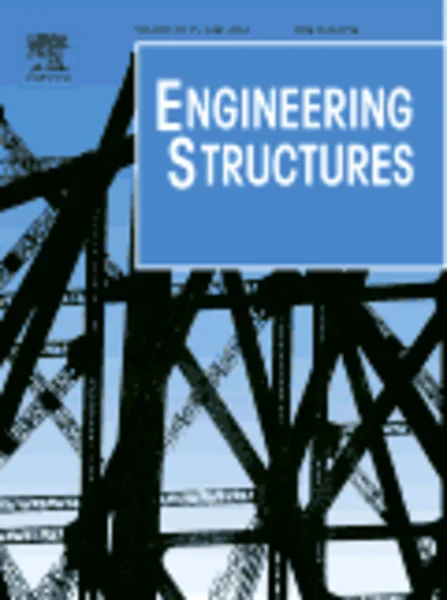-
application of the continuous wavelet transform on the free vibrations of a steel–concrete composite railway bridge
جزئیات بیشتر مقاله- تاریخ ارائه: 1392/07/24
- تاریخ انتشار در تی پی بین: 1392/07/24
- تعداد بازدید: 789
- تعداد پرسش و پاسخ ها: 0
- شماره تماس دبیرخانه رویداد: -
in this article, the continuous wavelet transform (cwt) is used to study the amplitude dependency of the natural frequency and the equivalent viscous modal damping ratio of the first vertical bending mode of a ballasted, single span, concrete–steel composite railway bridge. it is shown that for the observed range of acceleration amplitudes, a linear relation exists between both the natural frequency and the equivalent viscous modal damping ratio and the amplitude of vibration. this result was obtained by an analysis based on the cwt of the free vibrations after the passage of a number of freight trains. the natural frequency was found to decrease with increasing amplitude of vibration and the corresponding damping ratio increased with increasing amplitude of vibration. this may, given that further research efforts have been made, have implications on the choice of damping ratios for theoretical studies aiming at upgrading existing bridges and in the design of new bridges for high speed trains. the analysis procedure is validated by means of an alternative analysis technique using the least squares method to fit a linear oscillator to consecutive, windowed parts of the studied signals. in this particular case, the two analysis procedures produce essentially the same result.
مقالات جدیدترین رویدادها
-
استفاده از تحلیل اهمیت-عملکرد در ارائه الگوی مدیریت خلاقیت سازمانی و ارائه راهکار جهت بهبود
-
بررسی تاثیر ارزش وجوه نقد مازاد بر ساختار سرمایه شرکت های پذیرفته شده در بورس اوراق بهادار تهران
-
بررسی تأثیر سطح افشای ریسک بر قرارداد بدهی شرکت های پذیرفته شده در بورس اوراق بهادار تهران
-
بررسی تأثیر رتبه بندی اعتباری مبتنی بر مدل امتیاز بازار نوظهور بر نقد شوندگی سهام با تأکید بر خصوصی سازی شرکت ها
-
تأثیر آمیخته بازاریابی پوشاک ایرانی بر تصویر ذهنی مشتری پوشاک ایرانی (هاکوپیان)
-
جهت یابی مسیر رودخانه های فصلی در حوزه رودخانه کارون
-
evaluating response modification factors of tadas frames
-
optimisation of glycogen quantification in mixed microbial cultures
-
teacher trainer and syllabus; a case study
-
acetoin production enhanced by manipulating carbon flux in a newly isolated bacillus amyloliquefaciens
مقالات جدیدترین ژورنال ها
-
مدیریت و بررسی افسردگی دانش آموزان دختر مقطع متوسطه دوم در دروان کرونا در شهرستان دزفول
-
مدیریت و بررسی خرد سیاسی در اندیشه ی فردوسی در ادب ایران
-
واکاوی و مدیریت توصیفی قلمدان(جاکلیدی)ضریح در موزه آستان قدس رضوی
-
بررسی تاثیر خلاقیت، دانش و انگیزه کارکنان بر پیشنهادات نوآورانه کارکنان ( مورد مطالعه: هتل های 3 و 4 ستاره استان کرمان)
-
بررسی تاثیر کیفیت سیستم های اطلاعاتی بر تصمیم گیری موفق در شرکتهای تولیدی استان اصفهان (مورد مطالعه: مدیران شرکتهای تولیدی استان اصفهان)
-
مدلی برای برندسازی سامانه منابع انسانی با رویکرد داده بنیاد
-
ارائه مدل مکان یابی-تخصیص در شبکه زنجیره تأمین خون در حالت عدم قطعیت با در نظر گرفتن اختلال و ارتباط عرضی بین بیمارستان ها
-
سیر تحول جرم اختلاس درنظام کیفری ایران
-
chemical investigation of drilling flowers, types of contaminations and ways to treat them
-
urban rights and sustainability in latin-america: first steps towards urban justice operationalization




سوال خود را در مورد این مقاله مطرح نمایید :